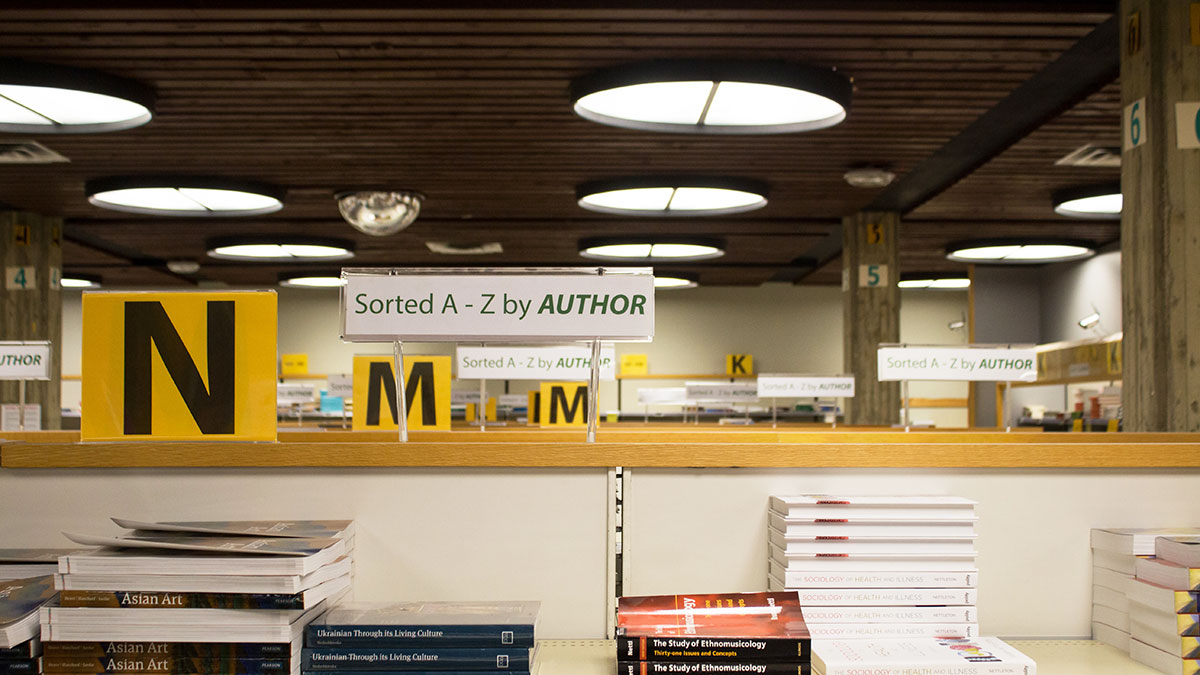 Christina Varvis
Christina VarvisTextbooks are one of the most aggravating aspects of being a student. Perenially-expensive, constantly-changing and, in most cases, absolutely necessary, textbooks provide a challenge to even the most seasoned of us.
Up until now, the University Bookstore’s inventory of textbooks was organized by course, with all necessary texts in the same area. This fall, though, the organizational system was changed — all books are now shelved alphabetically by author. While this system is more logical from an inventorying perspective, especially given the redundancy in locations for books that are being used in multiple courses, ultimately it has served to alienate the main customer base of the bookstore: university students at the U of A.
Alphabetization is, in most cases, a wonderful way to organize books. It forces books by the same author to cluster together, which is particularly useful in the case of fiction series or anthologies with the same editor, because if people like works by one author, they will tend to read more by the same author. Most bookstores also organize their sections by genre before breaking them down alphabetically, as having an entire bookstore as a huge alphabetized section is a little too widespread for the average consumer to tackle.
The same sort of principle applies at the U of A bookstore. While the new system is very intuitive from a staff perspective and has helped to make the store more organized, it makes the process of picking up books much more complicated for students. Now, students need to look up the authors, titles, and possibly even editions of every book in each course (in case of different editions of the same book being used, as they will now be side-by-side on the shelves), and then come prepared with all of that information.
Under the old system, a student only needed to know their course numbers and subjects (and perhaps sections if there were multiples), which made the process of buying textbooks a little less onerous. While it could be argued that the only difference between the old system and the new is that the student is required to take initiative and be prepared for finding their books, it still seems that the system is missing something: an overarching way of breaking down the giant alphabetized section and making it a bit easier to handle.
If the sections were broken up by faculty, for example, that could help. By putting Arts books in one section, Science books in another and so on and then alphabetizing the texts within those larger sections, then at least the sections would be smaller and if a student showed up without having the information they needed to find their books, the number of books that they would need to browse through would be far more manageable. Installing automated kiosks that come with a built-in inventory update would be helpful, too, so that a student wouldn’t have to check each book’s location only to discover that they’re out of stock. That could help relieve pressure on employees at the bookstore too. Right now the system seems to be generating a lot of frustration and confusion, but with a few tweaks, maybe it could be fixed and end up being a win-win for both students and the bookstore itself.
Complaints can be sent here.





I definitely purchased the wrong edition by accident, and had to eat the $150 cost of a new book as I had opened it before realizing.
One thing I particularly liked about organizing by SUBJECT was that you could check out what books were offered for other courses you were interested in. Now I have no idea what book requirements are for other courses in my discipline that I am interested in.
Honestly this way is really easy. Just see who the first author is and fund the book. Was in and out in minutes. Way easier then looking for my section of a class. People just hate change.
There are two computers next to the stairs to serve the purpose of the “automatic kiosks” mentioned, and have been there for years.The Bookstore’s website already shows when books are out of stock. It also allows students to put in their student number and receive a personalized list of all their textbooks. This printable list can be sorted by author, meaning there is no need to walk back and forth.